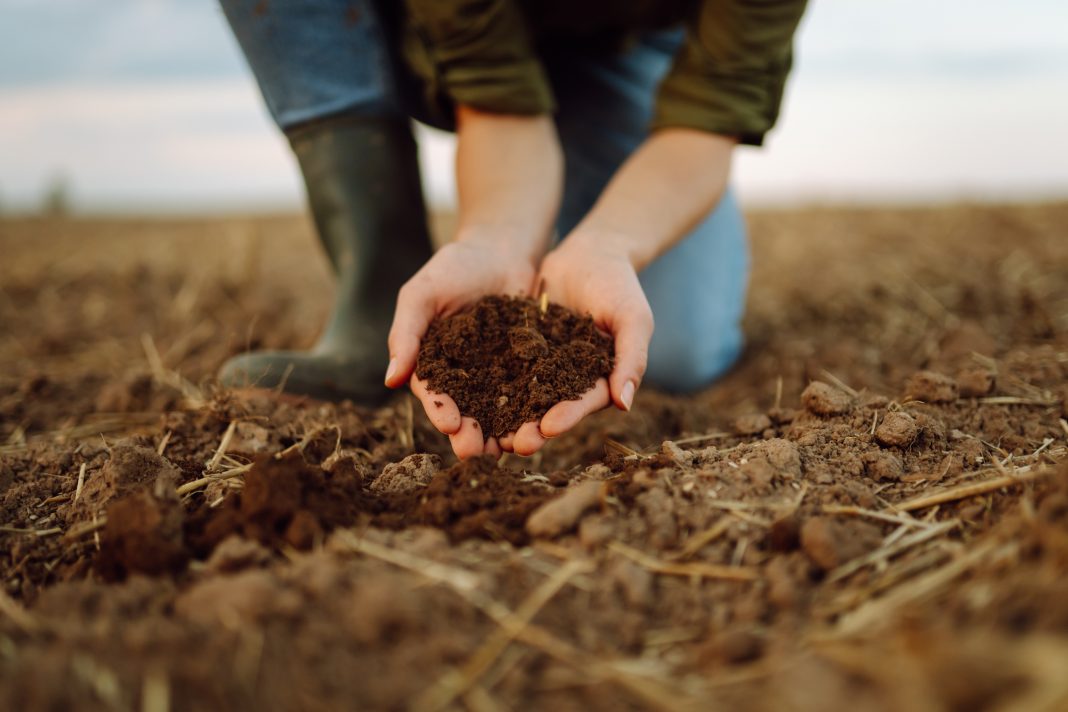Lynette Abbott from The University of Western Australia, places the spotlight on soil health, including its physical, chemical, biological and hydrological characteristics
Soil health encompasses its physical, chemical, biological, and hydrological characteristics. Inherent soil properties underpin how components of soil health combine to support productive agricultural or natural ecosystems.
The origin of the underlying parent rock materials and the extent to which they are weathered, influences naturally occurring nutrient cycling processes in soil. Hence, some soils have inherently high levels of nutrients available for plants, but others have more limited plant-available nutrient resources.
Therefore, this background information influences decisions made for overcoming plant nutrient limitations using inputs such as manufactured fertilisers or biological amendments like compost, or lime and gypsum, to ameliorate non-nutrient soil constraints.
Soil fertility and soil health
Soil fertility has been primarily focused on optimising the supply of nutrients for agricultural production. As a result of this agronomic focus, there is a very high level of success in predicting nutrient requirements based on plant type, soil type, topography, environment, climate, and history of agricultural management practices. This focus on soil chemical fertility applies to highly mechanised as well as subsistence agricultural systems.
The physical components of soil fertility are closely linked to baseline inherent soil features, including the proportions of clay, silt, and sand. It may include the type and amount of soil carbon, although soil organic matter is also a component of chemical fertility.
Soil physical properties influence soil structure, pore size distribution, water-holding capacity, water infiltration, and the adsorption and desorption of nutrients on soil surfaces. The physical properties of soil also influence root growth, especially soil strength and pore structure, which are associated with the aggregation of soil particles.
Soil biological fertility interfaces with both soil chemical and physical processes and contributes critically to soil health. This cannot be achieved by focusing only on the nutrient supply (e.g., chemical fertility) or soil structure (e.g., physical fertility). Indeed, an emphasis on nutrient supply in defining soil fertility in industrial agricultural contexts has the potential to override important biological processes that contribute to soil health. Such an approach minimises the contribution soil organisms make to soil fertility and limits the development of healthy soil resilient to potentially detrimental soil-to-land management practices into the future.

The importance of plant-soil relationships to soil health
Plants significantly contribute to soil health, often including interactions with soil organisms. This results in processes that alter nutrient access by plants and nutrient cycling (i.e., factors associated with soil chemical fertility):
- The formation of mycorrhizal associations (e.g., contributing to nutrient uptake),
- Increased activity of soil organisms (e.g., contributing to nutrient uptake and decomposition of organic matter in the rhizosphere),
- Change in relative abundance of soil organisms (e.g., influencing the rate of nutrient cycling),
- Release of atmospheric nitrogen into soil (e.g., N from legume residues that include fixed atmospheric nitrogen).
Other interactions between roots and soil organisms can influence soil structure (i.e., factors associated with soil physical fertility):
- The formation of mycorrhizal associations (e.g., contributing to access to water under drying soil conditions),
- Improved soil aggregation (e.g., by increasing the length of hyphae associated with mycorrhizal),
- Improved soil penetrability (e.g., due to improved soil pore structure associated with biological stability of soil aggregates, including roots).
Both chemical and physical components of soil fertility can be influenced by roots, and much of this occurs in collaboration with soil organisms. When soil biological processes are harmonised with plant growth and soil physical and chemical characteristics, soil fertility has greater potential to build and maintain a healthy soil environment for both productive agriculture and natural ecosystems.
Soil biological diversity and function
The diversity of organisms is immense and includes microscopic viruses, bacteria, fungi and protozoa, and soil animals, such as nematodes, mites, springtails, spiders, insect larvae and earthworms.
Furthermore, each group of soil organisms is in itself very diverse and contributes to a very dynamic soil community that influences its own habitat and is, in turn, influenced by the soil environment. Thus, the soil is the home of soil organisms, but this home can be strongly influenced by soil organisms, depending on how it is managed.
Because land management practices alter the soil environment, they significantly impact soil organisms. A major factor involved in these interactions centres around soil organic matter. Most soil organisms derive their carbon and energy from soil organic matter in one way or another, either directly or indirectly.
Land management practices that include nutrient inputs, plant rotations, soil disturbance, and the use of chemicals for pest and disease control all influence soil organic matter to some degree, so soil organisms that depend on organic matter are constantly responding to change, as well as creating changes to the soil environment.
Plant species diversity can influence the diversity of soil organisms due to root exudation into the rhizosphere (e.g., the kind and amount of exudates they produce), and in association with root age and root architecture (e.g., the depth and distribution of roots in the soil profile). The grazing of grassland plants by animals also influences root exudates and root growth, further altering the diversity and abundance of soil organisms.
In general, the range of processes to which soil organisms contribute is similar in all soils. However, the specific organisms present, and their relative abundances vary from location to location, with differences associated with soil type, vegetation, and local land use history.
Soil health app
The SOILHEALTH app provides information about complex aspects of soil health in a digital format. It contains seven animated videos, an eBook and Podcasts and is available for both IOS and Android devices. This free app was designed by Cheryl Rimmer and funded by the Australian National Landcare Program Smart Farms Small Grants.

This work is licensed under Creative Commons Attribution-NonCommercial-NoDerivatives 4.0 International.


